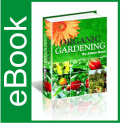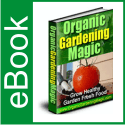Planning a Vegetable garden from seed
Planning a Vegetable garden from seed
Article by David
Planning a garden is the make or break part of it all. You need to make sure that all is well and that it is well laid out. Get this step wrong and you will pay a heavy price later. This article will prevent those common mistakes.
Whether you are a life long gardener, or an absolute novice picking up a spade for the first time, one thing is the same and that is that like everything in life, success rests largely on the planning work that is carried out. ‘Failing to plan, is planning to fail’ as the saying goes. This is very true with regard to planning your vegetable garden, (or any garden for that matter)
The first thing to do when planning your veg garden is to decide how big an area it will cover and how much space you can allocate to each vegetable.
Select your seeds based on how much space they need to grow. The easiest way to do this is often by reading directions on the seed packet; they should indicate how much space is required between plants and rows.
If trellis work is too much for you or impractical, then opt for a bush variety of vegetable like green beans or cucumbers or root vegetables such as carrots and parsnips.
If you decide to grow pole beans, then build a trellis from lightweight material. Bamboo canes are the most common, Trellis grown vegetables are a real nice addition as they add shape and structure, plus as a bonus they are easier to harvest.
Vine crops are also an option, with Zucchini and other squash’ being most common. They will though take over if not kept in check, so only chose these if you have the space or the time to look after them.
Plan in advance and ensure you buy your seeds early on in the season for tomatoes, broccoli and green peppers. Sow them indoors in around March so the young plants are ready for transplant at the end of May or the beginning of June.
Buy vegetable seeds packed for the current year’s growing season. The date is imprinted on the pack of the seed packet, so ensure that you are not buying out of date
Know the different varieties of plants, cherry tomatoes for example grow in tall vines and require staking. While Roma or sauce tomatoes grow on small bushes. Other tomatoes come in determinate or indeterminate varieties. Indeterminate tomatoes are grown on crawling vines near the ground, instead of staked.
If possible, then go for the heirloom varieties of vegetables for distinctive plants and fruits. These Heirloom vegetables come about by the saving and exchanging of seeds through generations of gardeners.
Choose vegetable seeds that will mature during the locality’s growing season and in the locality’s climate. Some varieties of vegetables seeds, like low-bolting spinach, are designed to withstand varying summer temperatures.
The final tip is really the most obvious, but also often one of the most overlooked, and that is to actually read the planting and growing instructions on the vegetable seed packets. This will ensure that the overall environment will encourage seed and plant growth, and get you off to a flying start.
About the Author
Seedparade are a Seed storeBased in the UK they are able to supply a large range of seeds for flower, fruit or vegetables, including vegetable seedsto produce stunning plants.
Use and distribution of this article is subject to our Publisher Guidelines
whereby the original author’s information and copyright must be included.

 August 13, 2012
August 13, 2012 







